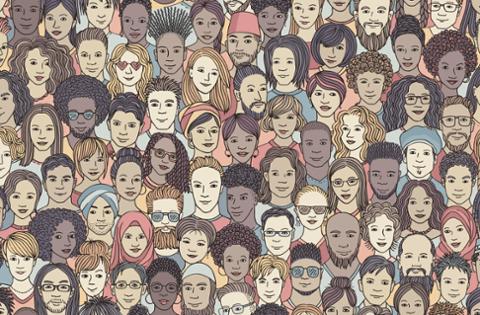With protests against racial injustice and police brutality sweeping the nation, tech companies have faced a renewed discussion over their employee diversity. Although many of these companies claim they’ve devoted considerable resources to diversifying their talent pipelines, actual progress has often been incremental.
Now it’s Snap’s time to offer up its diversity data, and by its own admission, its efforts “simply have not been good enough.” Nonetheless, the company claims that it’s managed to diversify its leadership team, on top of engaging in company-wide trainings to stop unconscious bias.
“In our view, one of the most effective ways to achieve transformational change is to build more equitable systems, and better equip people within those systems to identify and root out inequity,” the report continues. “We need systems and data that drive inclusion within our workforce and our products. And we need to inspire empathy among people—from all backgrounds—to better understand the lived experience of underrepresented groups.”
That sounds great, but what is Snap doing on a tactical level? The company claims that it’s adjusting its recruiting process to screen and hire more diverse candidates, and executives’ compensation is tied to the achievement of diversity goals. There’s also a customer-facing element: “We are planning our first-ever audit of our Discover content mix to understand our baselines for representation and portrayal to create specific goals for inclusive content.”
Although women made up 32.9 percent of Snap’s workforce in 2019, they constituted only 16.1 percent of the company’s technologist teams (and 6.7 percent of leadership). Black/African-American and Hispanic/Latinx representation within the workforce was only 4.1 percent and 6.8 percent, respectively; moreover, Black/African-American representation increased 0.6 percent in 2019, while Hispanic/Latinx rose a mere 0.5 percent.
Among the company’s technologists, some 91 percent were White or Asian. The senior leadership is 74.2 percent White, 12.9 percent Asian, 3.2 percent Black/African-American, 3.2 percent Hispanic/Latinx, and 6.5 percent Multiracial.
Recognizing the Problems
To Snap’s credit, it devotes a portion of its diversity report explaining how it went wrong in terms of crafting a more diverse workforce. This is a change from other tech firms’ reports, which tend to focus on everything that was done right, while downplaying or breezing over many of the core problems.
Here’s how Snap believes it messed up its diversity outcomes: Its executives lacked clarity about diversity-related goals, its teams lacked diversity-related data, communication was lacking between teams and the C-suite, and “majority groups” were unaware of the “extent of barriers, systemic bias, and daily struggles faced by underrepresented groups.” In addition, “sensitivities around [diversity] made c-suite leaders wary to take bets.”
The whole report is well worth reading, if only because Snap goes far more in-depth about its diversity issues and strategy than most companies.
In the latest edition of the Dice Sentiment Survey, a majority of technologists said their companies had made internal and/or external gestures of support toward diversity movements. However, a sizable number (roughly 40 percent) of companies had not. Change can take a lot of effort; it seems that Snap, at least on paper, is committed to giving what it takes.



